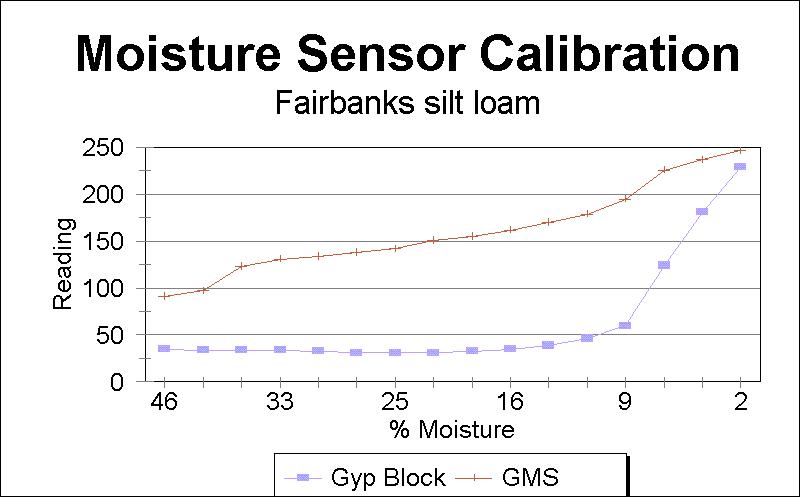|
SOFTWARE
Two software programs are included with the
irrigation monitor. One, called the firmware is burned into the
microprocessor on the circuit board. The second program is on a
diskette to be loaded into a Microsoft Windows computer to control
the uploading of data.
The firmware controls the time interval between sensor reads.
Which, the user determines before placing the device in the field.
In addition, the firmware reads each sensor four times in a
sampling period and averages them. It then, reverses the direction
of current to the sensor to minimize the migration in ions in the
soil solution to the electrodes Finally, it saves the readings to
memory, and watches the time until the next read.
The PC program
allows the irrigation monitor data to be uploaded and formatted in
the form of a spreadsheet. The user can also set the time interval
between samples, and the accuracy of this time with this program.
User
Setup
Before placing the irrigation monitor in the field
the user must set the sampling interval. You can set this interval
from one minute to 256 hours. Of course, the time between uploads
determines the maximum number of samples that can be taken without
overfilling the memory . For example, you can see that at one
minute intervals the memory will fill in 136.5 hours, or 5 to 6
days. Whereas, an interval of 256 hours will allow just one read
in over 10 days..
For irrigation work a sampling time of 2 to 6 hours is
adequate. In this range the data logger can store data for 682 to
2048 days. As you can see there is plenty of extra storage space
for more detailed readings.
The user can also
adjust the accuracy of the data loggers clock. However, this
adjustment is temperature dependent and should be adjusted at the
site of operation.
SENSORS
You can use two types of soil moisture sensors. Each type is an
electrical resistance device that measures soil water tension. The
two sensor types are the gypsum block, and the granular matrix
sensor (GMS), made by Watermark. There are both advantages and
disadvantages to each of these sensor types.
Back
to page top
|




